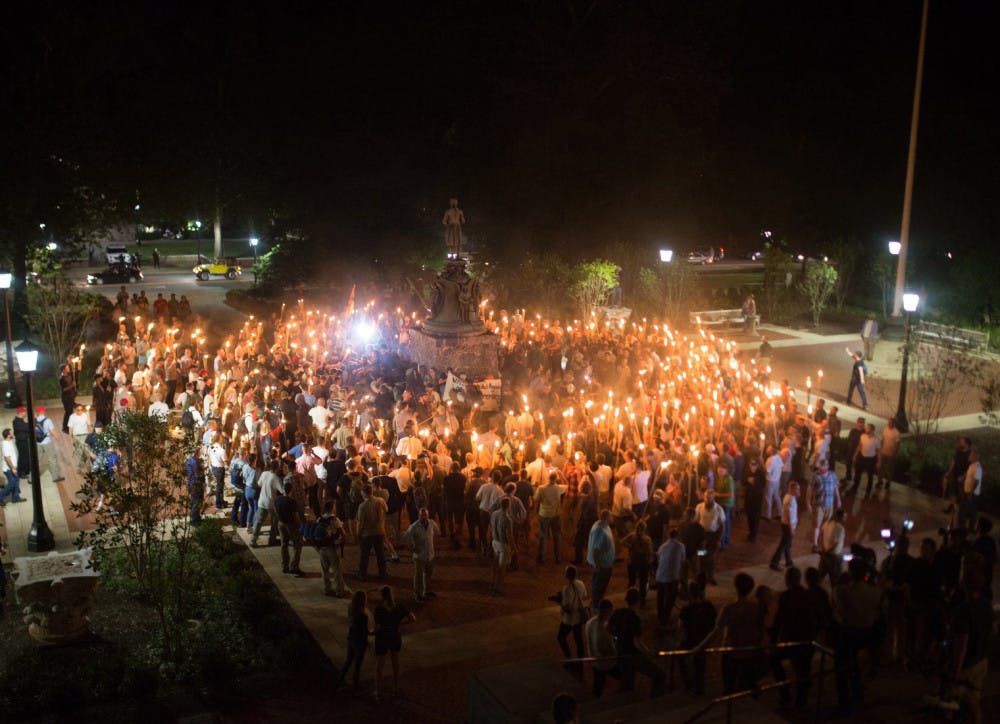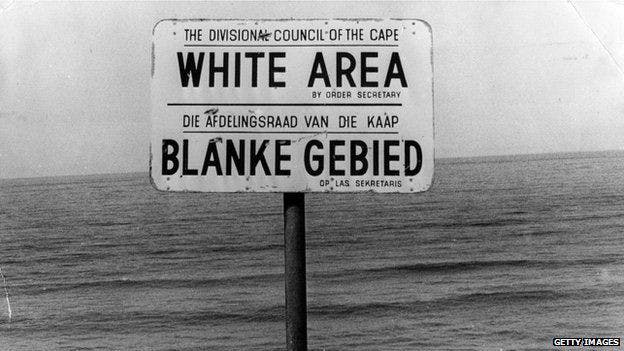
Scene from Unite the Right rally in Charlottesville on Aug. 12, 2017.
White supremacy has a history everywhere in the world, and today is still thriving well enough to maintain status as a modern ideology. Throughout the past year, it’s begun to gain momentum again in the United States through rallies and other movements.
According to Merriam-Webster, a white supremacist is “a person who believes that the white race is inherently superior to other races and that white people should have control over people of other races”.
In August 2017, white supremacists or “nationalists” rallied at the University of Virginia in Charlottesville in protest of the removal of a Confederate statue. In response, counter-protestors also rallied against them causing former-governor Terry McAuliffe to declared a state of emergency.
The “Unite the Right” rally was deemed unlawful by the counter-protestors and clashes broke out between the two – a vehicle even drove into a group of the counter protestors, killing one person and leaving dozens more injured.
The rally left America in shock and made national news for days because it was one of the first times the country has seen a modern-day rally take place in light of those kinds of views and ideologies.

White supremacists rally around the Robert E Lee statue at UVA
White supremacy has foundations that go back to at least 17th century scientific racism, the ideology that set up the relations in the United States, Europe and South Africa.
In the US, white supremacy was a dominant view after the civil war and continued into the mid-20th century, sparking the Civil Rights Movement.
Apartheid in South Africa, gender inequities, Jim Crow laws in the US and the Atlantic slave trade are all historical and contemporary sociopolitical structures that have implemented the policies of white supremacy.
The ideologies also transcend into Europe through the history of Nazi Germany and Adolf Hitler’s fascination with an Aryan race and to rid the world of Jewish people.
In 1948, Apartheid was introduced in South Africa after the general election. The legislation of Apartheid split people up into four groups:
- White
- Black
- Colored
- Indian


The “colored” and “Indian” groups were divided into sub-classifications. In 1970, the Afrikaner-run government eradicated non-white representation in politics, consequently leading to black people losing citizenship.

A sign showcasing the discrimination during Apartheid in South Africa in the 1940s.
Since President Donald Trump was elected into office in 2016, there’s been a rise of white supremacist activity going on in the country. Since his election, the Southern Poverty Law Center (SPLC) documented an average of 87 hate incidents which is five times the national average recorded by the Federal Bureau Investigation (FBI) in 2015.
It’s even shown itself on Longwood’s campus, creating controversy and concerns among students. On March 22 and 23, white nationalist posters were found in the Midtown Landings and outside of Ruffner Hall.
The posters advertised the group Patriot Front whose mission is “a hard reset on the nation we see today – a return to the traditions and virtues of our forefathers. The same spirit that urged our ancestors onward to create this nation will once again be brought to light, and new America will be built within its current dilapidated, shameful iteration,” according to their website.
How can white supremacy still go on today? By not being properly addressed – when the Unite the Right rally happened in Charlottesville, President Trump never outwardly addressed the white nationalist group. Instead, he said there was good people “on both sides.”

President Donald Trump delivers remarks on August 15, 2017 in New York City.
Since Trump’s second day in office, minorities, both ethnical and racial, have been dismissed as well as Obama-era legislation on civil rights. Even David Duke, a former leader of the Ku Klux Klan, announced his support for Trump which was a red flag for many Americans.
White supremacy and the ideals behind it have no place in our country or on our campus. Since the Civil Rights movement, America has progressed into becoming a more diverse country where people can be more themselves than ever before.
While there is still a lot of work this country needs to do, we need to stay on the right path – by letting white supremacy take the reign of this nation, we are only moving backward. Not forward.









